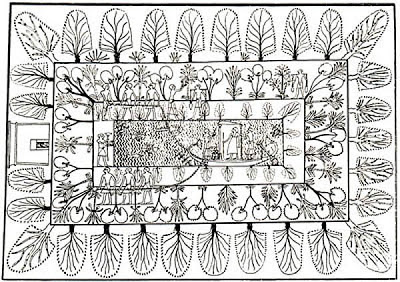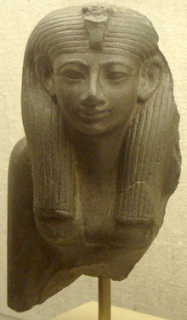The Ancient Egyptian garden goes back to 2800 BC. It was formal in structure. Attached to the house was the portico, a covered porch that could be supported by pillars. The portico connected the house to the outdoors and the garden. In the center of the garden was a pool, either rectangular, oblong or T-shaped. Around the pool could be trees of fig, palm, sycamore, pomegranate, nut trees and jujube. Sometimes arbours of grapevines circled the outer edges of the garden. Flowers would be grown in beds or in pots lining walkways to the house. Flower beds tended to be in solid colours and contained cornflowers, poppies, papyrus, daisies, mandrakes, roses, irises, myrtle, jasmine, mignonettes, convolvulus, celosia, narcissus, ivy, lychnis,…

